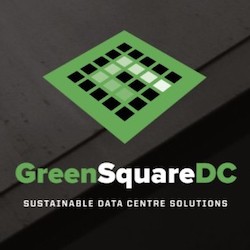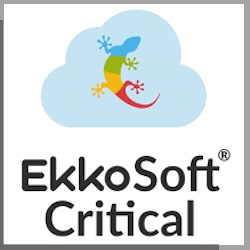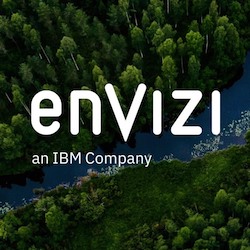Sustainability has evolved into an undeniable imperative, steering the globe towards a low-carbon, eco-conscious future. This urgency is highlighted by the recent UN synthesis report, which illuminated the concerning fact that global efforts to combat climate change are falling short of achieving net-zero goals by 2050.
The HCLTech Trends 2024 report asserts that transitioning to a low-carbon economy will require continued innovation, collaboration and policy support. The potential benefits are substantial — a healthier planet, a more resilient society and a brighter future for generations to come. The report outlines this transformative journey, highlighting the urgency for industries to strike a balance between current needs and future requirements while emphasizing long-term social viability and cost savings.
As businesses embrace this imperative, Santhosh Jayaram, Senior Vice President, Corporate Sustainability at HCLTech emphasizes: “No part of the world is untouched by the impacts of climate change and other environmental impacts. 2024 urges companies to have a meticulous integration of eco-conscious practices and integrated strategies. It demands a commitment to profit with environmental stewardship, shaping a future where sustainable practices are not just a choice but a fundamental driver of success.” The report highlights an ecosystem where sustainability is no longer confined to the periphery but stands firmly at the core of strategic decision-making.
Understanding the current sustainability landscape
The HCLTech Trend 2024 report portrays a notable shift as sustainability moves from a niche concept to a mainstream practice where companies are treating it less as a disruption that needs mitigation but more as an opportunity they can leverage.
Among the findings, 59% of respondents believe green IT will play a major role, while 57% see supply chain track and trace already in the adoption phase. The belief that implemented initiatives will achieve sustainability goals within a year is shared by 45%, with an additional 22% endorsing green supply chains to accelerate the process.
Diving deeper into the intricacies, the report analysed many microtrends, with supply chain track & trace, GHG emissions and green IT emerging as the frontrunners. The highest impact on larger sustainable development goals and the planet is coming from green IT. This is primarily due to its ability to address the planetary needs from multiple angles, such as energy, air and water, rather than just one.
“Green IT is not just about reducing carbon footprints; it is a strategic ascent driven by the recognition that technology, when wielded sustainably, becomes a powerful force for environmental stewardship and strategic innovation,” adds Jayaram.
Green IT’s ascendance in corporate sustainability
Green IT’s prominence is accentuated by its pivotal role in addressing multiple environmental challenges posed by the IT industry. The sector’s significant carbon footprint, coupled with the escalating issue of electronic waste (e-waste), necessitates urgent action. Recycling e-waste becomes crucial to prevent hazardous materials from leaching into the environment, posing risks to both human health and wildlife. An estimated 53.6 million tonnes of e-waste were produced globally, but only 17.4% was documented as formally collected and recycled.
Moreover, the IT industry’s substantial impact on water resources and air quality necessitates the adoption of water-efficient technologies and practices and the use of renewable energy sources. For instance, data centers consume a lot of water for cooling. Using water-efficient technologies and practices can help reduce this impact. Similarly, electronics manufacturing releases hazardous air pollutants, and the use of IT equipment can contribute to smog. Using renewable energy sources and reducing energy consumption can help to reduce these impacts.
The report reveals that 43% of respondents perceive green IT as being in the hype stage. This indicates a widespread acknowledgment of its significance, with a projected market size of $42.91 billion by 2028 and an impressive Compound Annual Growth rate of 15.21% between 2023- 2028.
While green IT enjoys its moment in the spotlight, challenges loom on the horizon. The report sheds light on the lack of standardization in green IT practices, presenting a hurdle for businesses trying to compare different solutions and make informed decisions. Frequent disposal of devices, a consequence of rapidly changing technology, leads to increased resource consumption and waste generation, posing an environmental challenge.
The high-power consumption of GPUs used in green IT, despite the environmental focus, raises questions about their sustainability. Furthermore, the substantially high initial investment required for implementing green IT systems remains a roadblock for many enterprises.
Decarbonization as a catalyst for collaboration
Why is decarbonization disruptive? Decarbonization’s disruptive potential is rooted in its high impact on community and profitability. Observing the broader implications, the HCLTech Trends 2024 report suggests that decarbonization might bring about massive commotion in the future as the cost of inaction is too high.
With enterprises realizing the potential economic benefits along with the larger environmental impact, decarbonization is proving to be a real game changer in the years to come. For instance, the transportation sector contributes approximately 25% of all energy-related greenhouse gas (GHG) emissions. A Battery Electric Vehicle (BEVs), which are electric engine powered by large batteries, emits 70% less CO2 over its lifetime compared to an Internal Combustion Engine (ICE) and 50% less compared to hybrid vehicles.
The report outlines the multifaceted business value derived from decarbonization. Enhanced risk management is achieved by businesses as they strategically reduce their GHG emissions, mitigating risks associated with climate change, including regulatory changes, supply chain disruptions and reputational damage.
Operational cost savings, stemming from reduced energy consumption and improved resource utilization, contribute to improved cost-efficiency. Decarbonization acts as a catalyst for innovation and competitive advantage, driving technological advancements and enabling businesses to develop new products, services and processes that offer a competitive edge. As climate regulations tighten, businesses that proactively decarbonize can avoid potential compliance costs and legal challenges.
According to the HCLTech Trends 2024 report, several factors propel the adoption of decarbonization. The rising cost of carbon emissions stands out as a significant driver, with governments worldwide implementing policies to reduce greenhouse gas emissions. This makes decarbonization a cost-effective imperative for businesses.
“Businesses are compelled to reassess their operations and embrace decarbonization as a non-negotiable imperative,” says Jayaram. The need for carbon-based (GHG) accounting and credit management is on the rise, driven by stakeholders such as investors, clients, partners and regulators demanding transparency and accountability regarding companies’ environmental impact.
The continuous advancement of renewable energy and energy efficiency technologies further contributes to the feasibility and cost-effectiveness of decarbonizing economies. Recently, HCLTech announced its collaboration with Schneider Electric, to develop carbon-efficient solutions for data centers in the Asia Pacific (APAC) region, exemplifying a strategic partnership aimed at advancing the goals of decarbonization.
Looking ahead
HCLTech Trends 2024 paints a promising picture of a world transitioning towards a sustainable future. Green IT and decarbonization are not just trends; they are critical components of a global movement towards a healthier planet and more resilient societies. As companies increasingly view sustainability as an opportunity, the synergy between technological advancements and environmental stewardship will shape the landscape for generations to come.
Author Mousume Roy is APAC reporter for HCLTech. Related: Read more HCLTech guest blogs here.




